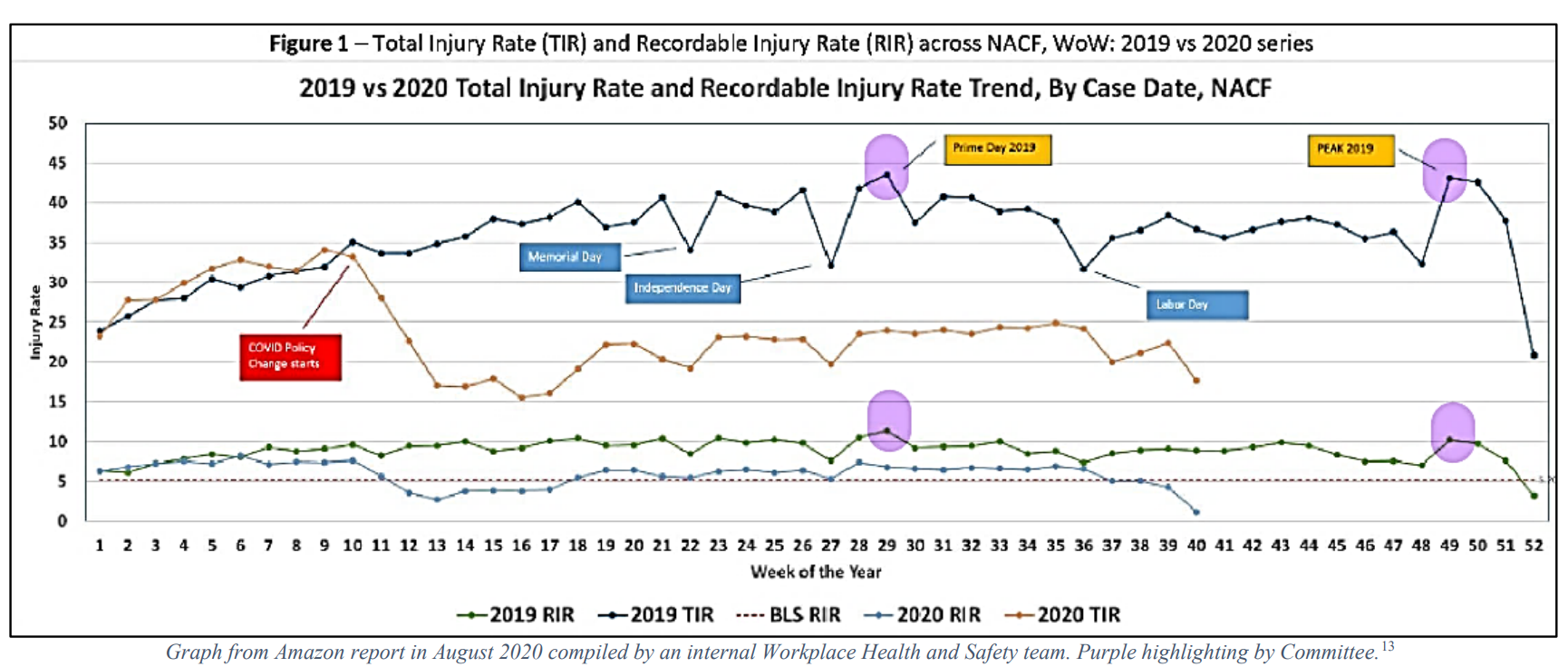U.S. Committee Report About Amazon
Few people think about the impact of Amazon Prime Days on employees, but the U.S. Health, Education, Labor, and Pensions committee produced a report worth reviewing in class.
Although the report format doesn’t follow all business communication principles, students will see several they could include in their own reports:
Clear title and subtitle: With repetition and strong language, the titles conveys the main point: “PEAK SEASONS, PEAK INJURIES: Amazon Warehouses Are Especially Dangerous During Prime Day and the Holiday Season—and the Company Knows It.”
Message titles (or “talking headings”): The authors create a clear argument with full-sentence subheadings.
Executive summary: Although not labeled, the first four paragraphs function as an executive summary. This part explains the complaint well.
Data and stories: The report mixes data and employee quotes to balance a logical argument with emotional appeal.
OSHA warnings: The second paragraph of page 5 and top of page 6 are particularly strong, giving evidence from OSHA reports about inaccurate and missing reports. To me, these are stronger than the first paragraph on page 5, which accuses Amazon of treating minor cuts and bruises and not reporting them as injuries—which isn’t required.
To meet business communication standards, the report could be improved:
The report could be more visually interesting. The underlined heading, to start, is a 1990s throwback.
This line chart is a mess. Purple highlighting is helpful, but students would find better ways to present this data.
The argument seems to be simply about volume. Yes, Amazon’s injury rate on Prime Days is far above industry averages, but so is its volume. What about on other days? Before Prime Day, when volume is lower, injuries are lower. Perhaps they average out? This doesn’t excuse high rates, but it does explain them. Prime Day is an example of cherry picking data and is employed as a marketing frame for the argument—not the problem itself.
The inflammatory language may detract from the report. “But Amazon does not stop there” is unnecessary to make the argument and might harm the writers’ credibility.
The company’s admission of staffing issues may be inappropriately raised in the report. Using an Amazon safety training video that includes an example of an injury caused partly by lack of staffing seems unfair.
An entire section is dedicated to staffing, but other solutions might be more realistic. More of the report could be dedicated to actions Amazon might take. The few listed on page 8 could be expanded.
I’m never convinced by arguments like this one: “But those investments over four years are less than 3 percent of the company’s $36.9 billion in profits in 2023 alone.” I have often seen these calculations—percentages of revenue or profit—in students’ presentations, and they mean little. What do similar companies spend, or what is the industry average? Without a target, this is not a compelling reason to spend more.
This is an interesting report with good reasons for Amazon to reduce workplace injuries. A consultancy’s report, which students might write instead, could make a more useful, convincing argument.


